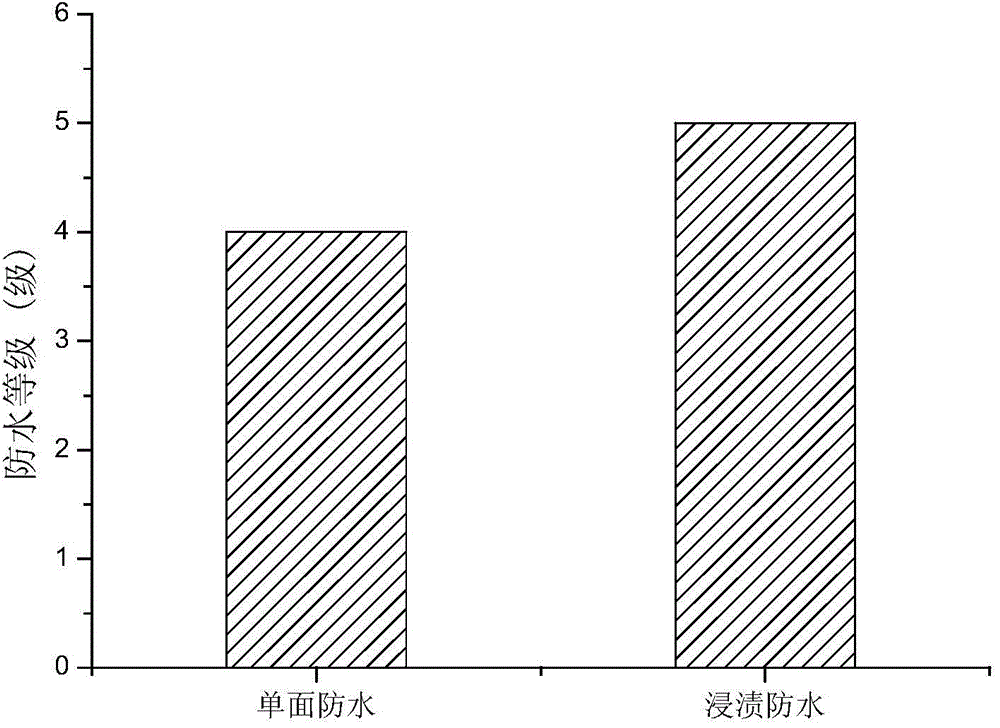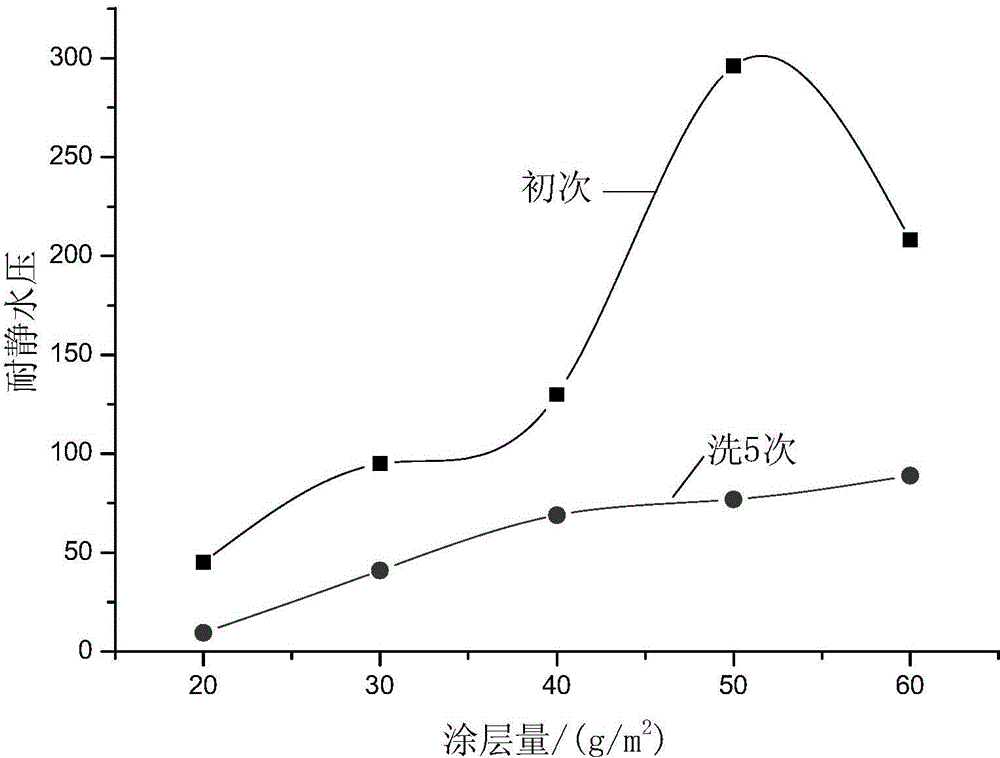Waterproof composite coated fabric and production technology thereof
A composite coating and production process technology, applied in the field of textile fabrics, can solve the problems of lack of water resistance, heat sealing stability, tear strength, abrasion resistance, etc.
- Summary
- Abstract
- Description
- Claims
- Application Information
AI Technical Summary
Problems solved by technology
Method used
Image
Examples
Embodiment 1
[0063] Take 1680D nylon gray cloth with a thickness of 0.4 mm, dry it waterproofly and shape it with a setting machine to form a nylon cloth layer. The parameter conditions of the setting machine are: drying tunnel temperature: 140°C; drying tunnel length: 20m; set speed: 6.5m / min. The components in the glue coating are taken in parts by weight, mixed and stirred evenly, wherein, raw glue: 100 parts; solvent: 20 parts; bridging agent: 8 parts.
[0064] One side of the nylon cloth layer is calendered and then scraped once, and then calendered and scraped twice to form a second glued layer with a thickness of 0.2mm. After the other side of the nylon cloth is calendered, the glue is scraped twice to form the first glue layer with a thickness of 0.1mm. Wherein, the parameters of the calender are set as follows: cylinder temperature: 90-125°C; pressure: 8-12T; vehicle speed: 20-25m / min; cloth unwinding mode: rolling; cloth receiving mode: rolling. The single-coating squeegee mach...
Embodiment 2
[0067] Take 1680D nylon gray cloth with a thickness of 0.4 mm, dry it waterproofly and shape it with a setting machine to form a nylon cloth layer. The parameter conditions of the setting machine are: drying tunnel temperature: 150°C; drying tunnel length: 25m; set speed: 7.0m / min. The components in the glue coating are taken in parts by weight, mixed and stirred evenly, wherein, raw glue: 150 parts; solvent: 30 parts; bridging agent: 10 parts.
[0068] One side of the nylon cloth layer is calendered and then scraped once, and then calendered and scraped twice to form a second glued layer with a thickness of 0.2mm. After the other side of the nylon cloth is calendered, the glue is scraped twice to form the first glue layer with a thickness of 0.1mm. Wherein, the parameters of the calender are set as follows: cylinder temperature: 90-125°C; pressure: 8-12T; vehicle speed: 20-25m / min; cloth unwinding mode: rolling; cloth receiving mode: rolling. The single-coating squeegee mac...
Embodiment 3
[0071] Take 1680D nylon gray cloth with a thickness of 0.4 mm, dry it waterproofly and shape it with a setting machine to form a nylon cloth layer. The parameter conditions of the setting machine are: drying tunnel temperature: 150°C; drying tunnel length: 15m; set speed: 6.0m / min. The components in the glue coating are taken in parts by weight, mixed and stirred evenly, wherein, raw glue: 50 parts; solvent: 10 parts; bridging agent: 5 parts.
[0072]One side of the nylon cloth layer is calendered and then scraped once, and then calendered and scraped twice to form a second glued layer with a thickness of 0.2mm. After the other side of the nylon cloth is calendered, the glue is scraped twice to form the first glue layer with a thickness of 0.1mm. Wherein, the parameters of the calender are set as follows: cylinder temperature: 90-125°C; pressure: 8-12T; vehicle speed: 20-25m / min; cloth unwinding mode: rolling; cloth receiving mode: rolling. The single-coating squeegee machin...
PUM
| Property | Measurement | Unit |
|---|---|---|
| Thickness | aaaaa | aaaaa |
| Thickness | aaaaa | aaaaa |
| Thickness | aaaaa | aaaaa |
Abstract
Description
Claims
Application Information
 Login to View More
Login to View More - R&D
- Intellectual Property
- Life Sciences
- Materials
- Tech Scout
- Unparalleled Data Quality
- Higher Quality Content
- 60% Fewer Hallucinations
Browse by: Latest US Patents, China's latest patents, Technical Efficacy Thesaurus, Application Domain, Technology Topic, Popular Technical Reports.
© 2025 PatSnap. All rights reserved.Legal|Privacy policy|Modern Slavery Act Transparency Statement|Sitemap|About US| Contact US: help@patsnap.com



